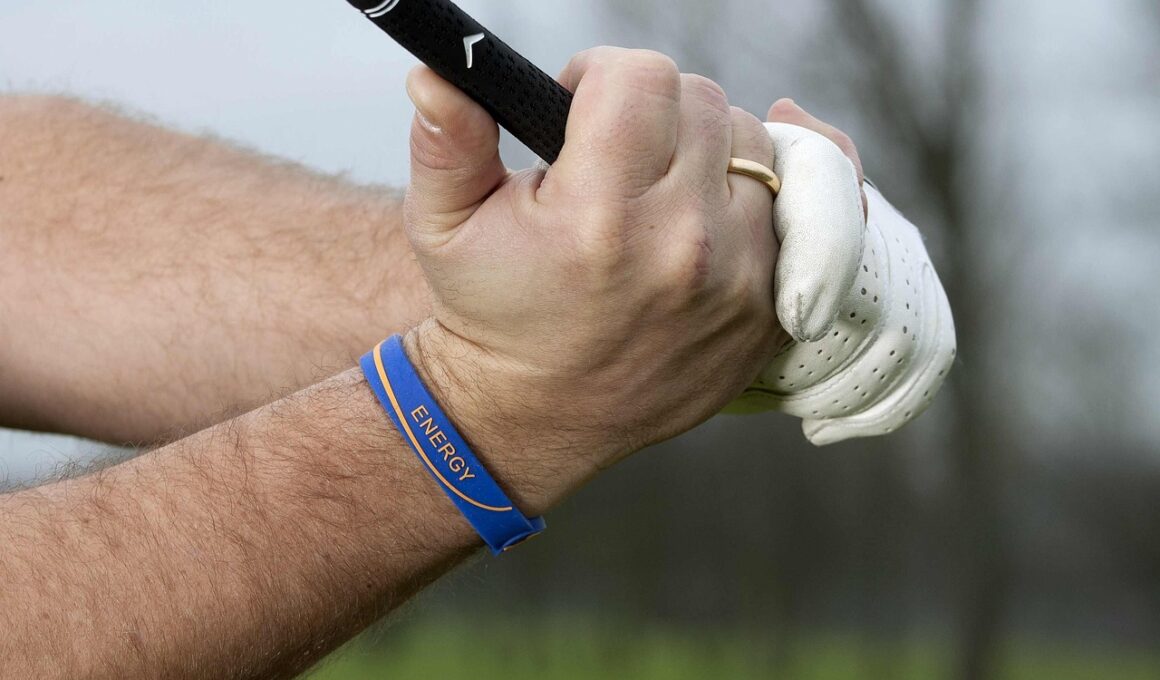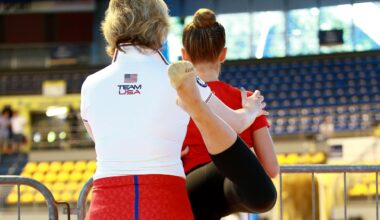Golf Swing Stability: Drills to Improve Balance Under Pressure
In golf, the ability to maintain balance during your swing is crucial for consistent ball striking. Balance is not just about stability but also about proper weight distribution throughout your swing. By enhancing your core stability and overall coordination, you’re setting yourself up for success on the course. To achieve better balance, you can integrate various drills into your practice routine. One effective drill focuses on maintaining a solid stance while practicing your backswing. This exercise requires you to distribute your weight evenly across your feet as you initiate your swing. Remember to engage your core muscles to support your body during this movement. Additionally, practicing on uneven surfaces can greatly challenge your balance, simulating on-course situations where you may not have perfect footing. Stand on one leg and perform a mini-swing. This helps you develop the necessary balance needed during your full swing. Emphasizing these exercises will also build the muscles associated with balance and coordination. Combining this strength with drills designed to improve your focus can lead to enhanced performance under pressure.
Core Exercises for Balance Improvement
Incorporating core exercises into your golf fitness regimen is vital for enhancing stability during your swing. A strong core plays a fundamental role in achieving proper balance and coordination. Some effective exercises include planks, Russian twists, and bicycle crunches; these not only strengthen your core but also challenge your balance. For instance, when performing a plank, engage your entire torso while focusing on keeping your body straight. Aim to hold the position for at least thirty seconds. Once you master the plank, challenge yourself by lifting one leg at a time. Russian twists can be performed using a medicine ball for extra resistance. This movement mimics the rotational aspect of a golf swing, thereby promoting better coordination. Another great exercise is the single-leg deadlift, which increases balance and stability while targeting your hamstrings and glutes. Remember to control your form and alignment while performing these exercises; consistency is key. Practicing these movements regularly will enhance your golf performance as well as improve your ability to maintain balance in various situations. Stronger core muscles translate to better swing mechanics and more accurate shots.
In addition to core workouts, resistance training can significantly aid your quest for better balance. Exercises that incorporate resistance bands or free weights allow for enhanced stability. Focus on multi-directional movements, which necessitate the use of balance and coordination. For example, lateral lunges can help you work on stability and control while promoting leg strength. Resistance training not only builds muscle but also improves your body’s ability to handle uneven ground. When practicing these drills, initiate movements slowly to enhance your control. Integrate squats and deadlifts into your routine, as they will support your balance during the golf swing. As your muscle strength increases, you will notice improvements in your performance on the course. Always remember to warm up prior to engaging in resistance training exercises. Flexibility and mobility are equally important for achieving balance, so don’t neglect these areas. An effective way to combine strength and mobility work is to incorporate yoga into your routine. Additionally, yoga promotes mental focus, which is vital for maintaining composure during crucial moments on the course.
Dynamic Drills for Balance Stabilization
Dynamic drills that focus on movement patterns related to the golf swing are particularly beneficial for enhancing balance. One recommended drill is the toe touch, where you stand on one leg and extend the other leg forward while reaching down to touch your toes. This action imitates the balance required during your golf swing. Initially, this drill may be challenging; however, it builds strength in your legs and improves overall coordination. A key point to remember is to keep your core tight throughout the movement. Once you become proficient at this drill, challenge your balance by introducing a small weight or using a balance board. Another dynamic drill is the step-up exercise, which helps to engage your balance in a golf-specific way. When stepping onto a platform, keep your body aligned, and maintain a controlled descent. Whether you are focusing on stability, strength, or coordination, integrating these drills can lead to enhanced performance. Practicing drills that mimic the challenges of maintaining balance will translate into better execution on the course, especially under pressure when accuracy and power are essential.
Visualization techniques can also complement your physical practice for improved balance and coordination. Mental imagery has been shown to enhance performance across various sports, including golf. Spend a few moments visualizing your successful swing. Imagine how it feels to execute it with perfect balance and precision. This process can reduce performance anxiety and provide clarity under pressure. Pair visualization with breathing exercises to achieve a calm and focused mindset. Utilize deep-breathing techniques to center yourself before each tee shot. Engaging in mental practice can assist in conditioning your mind to react positively in stressful moments. When you have a clear mental picture of your mechanics, you increase your chances of performance consistency. Moreover, consider journaling your progress and experiences related to balance development. Document your practice sessions and monitor the drills that work best for you. This reflection will help solidify learning and serve as a motivational tool. By steadily incorporating these mental approaches, the relationship between mind and body can create an optimal state for maintaining balance, especially in high-pressured situations.
The Importance of Consistency and Patience
Consistency is paramount when it comes to improving your balance in golf. Just like any skill, your ability to balance will take time and persistent effort to develop. Integrating various exercises and drills into your regular practice routine will yield the best results. Make sure to practice these drills several times a week, and allow time to recover between sessions. One of the keys to effective balance enhancement is focusing on slow, controlled movements. Rushing through exercises can work against you, leading to poor muscle coordination and compromised stability. Additionally, be patient with yourself. Everyone progresses at different rates, and it’s important to celebrate small victories along the way. Track your improvements, whether it’s holding your balance longer or achieving better control during your swing drills. Always pay attention to how your body feels during these exercises. If certain movements cause discomfort, consider modifying them or consulting a professional trainer or physical therapist. With patience and consistency, the evolution of your balance and coordination will directly support your overall performance and enjoyment of the game.
As you explore these drills and exercises, remember that balance and coordination are integral components of a successful golf swing. Maintaining focus on these aspects of your game can lead to a more stable, powerful swing under pressure. Furthermore, establishing a strong foundation in balance will positively influence other areas of your performance. Improved balance helps with your overall mental fortitude and focus. It can lead to better shot accuracy, distance control, and enhanced confidence on the course. Don’t shy away from seeking additional resources, whether it’s instructional videos, articles, or professional coaching, to support your journey. Learning about the mechanics behind a balanced swing can be just as valuable as physical training. Golf encompasses both mental and physical dimensions, so strikes a balance between practice. Continuously work towards achieving optimum stability and coordination. Ultimately, integrating these strategies into your routine will help you navigate each swing series smoothly. When you remain composed during various game situations, this improvement creates an enriched golfing experience and lasting enjoyment of the sport.


